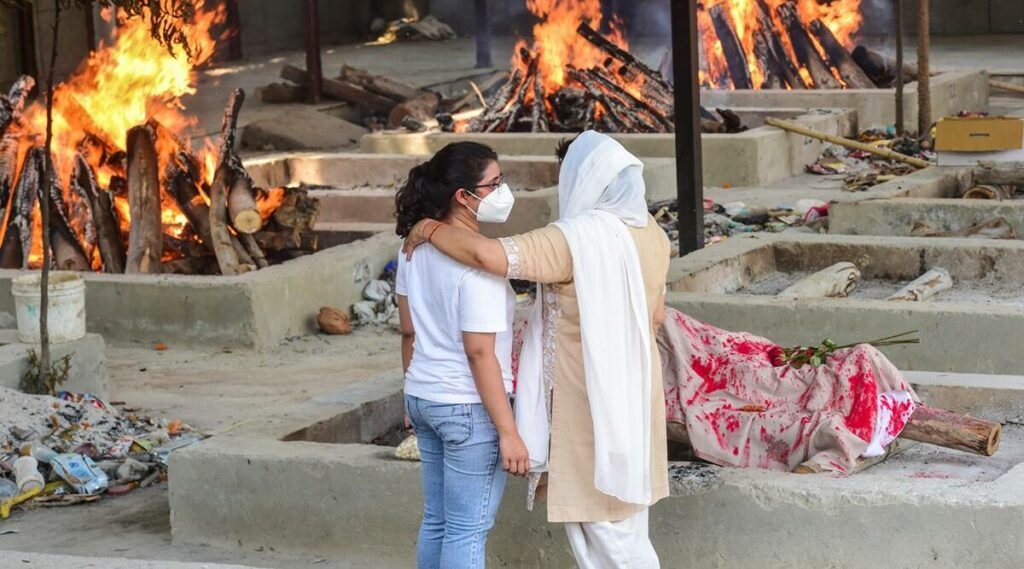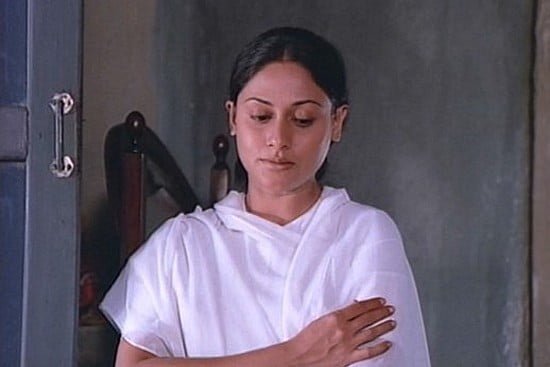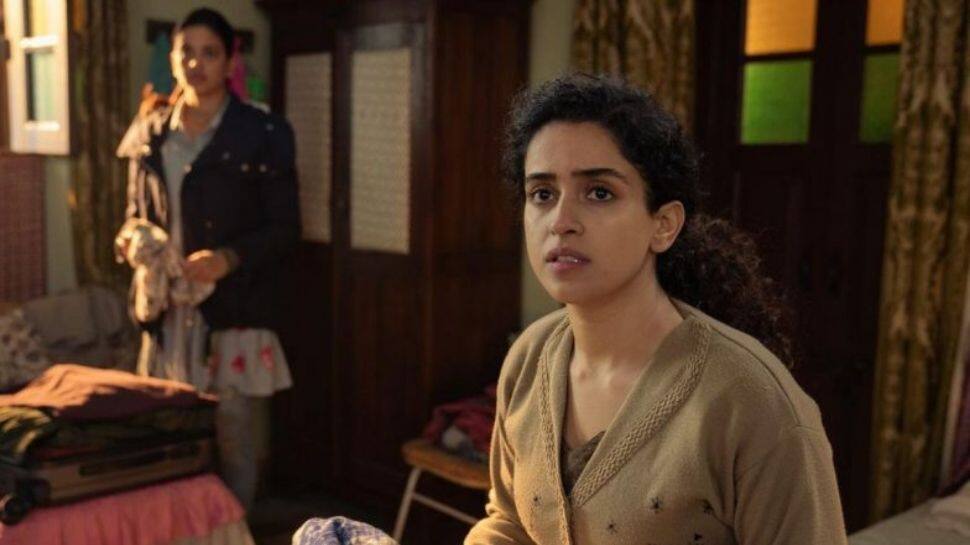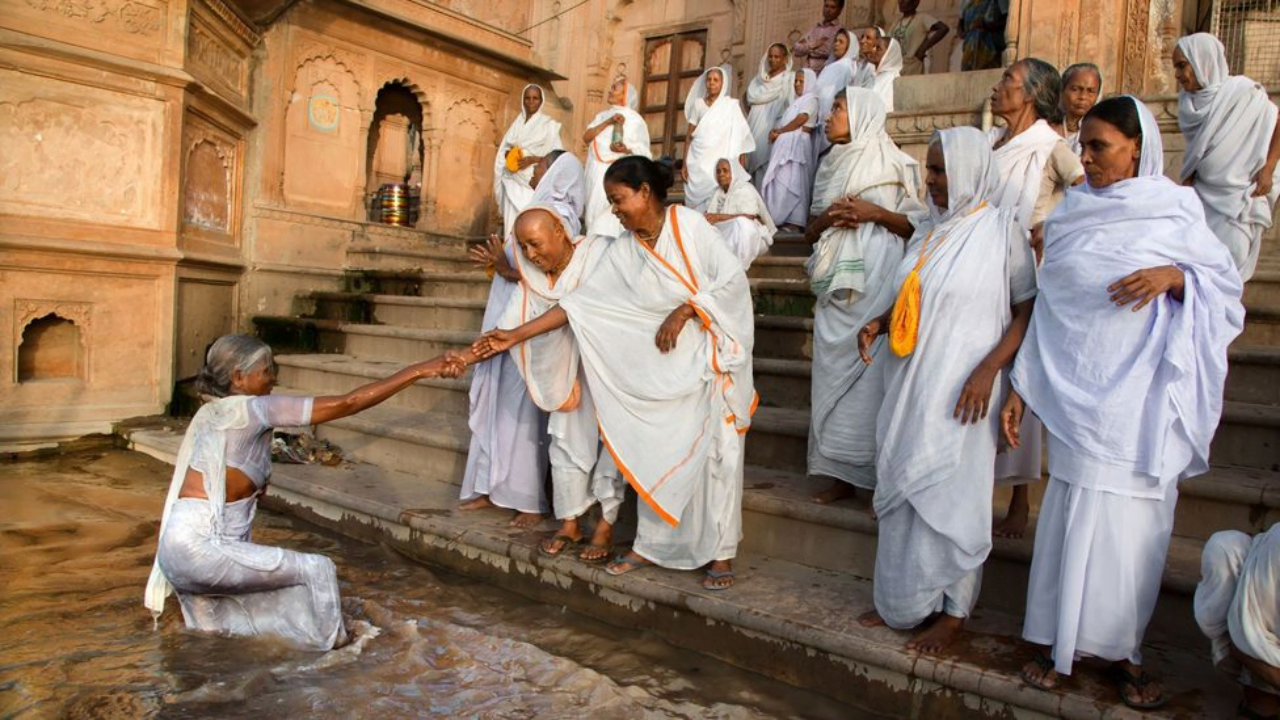In a recent discussion on grief in India, advocates referred to being widowed as a “state of social death.” This is hardly an exaggeration in a culture that praises accommodating women (a thinly veiled euphemism for “women who endure everything the men in their lives throw at them“) – it is difficult to have wholly personal experiences. Grief is no exception. With no opportunity to focus on the loss, the emphasis on sacrifice and servitude becomes an involuntary performance for women.
Although these practices are changing, there are still some deeply ingrained beliefs that hinder women from processing grief in a way that is reflective of their personal experiences. This issue goes beyond an emotional burden; there are implications for a woman’s safety and social support, as well as a deprivation of her basic needs after the loss of her husband.
Gendered expectations around grief have existed for centuries. While religion is often cited as a basis for oppressive customs, it’s possible that the cultural norms are largely created by patriarchal interpretations of religious texts, rather than their original messaging. The Gita, for example, strongly emphasises equality between genders, and there are multiple passages which outline the importance of serving each other in different ways. Conveniently, cultural norms often ignore these teachings and extend the idea of “devotion to one’s spouse” only to women.

The World Widows Report, first published by the Loomba Foundation in 2015, outlines the scale of this issue, with over 40 million widows in India facing multiple forms of discrimination, including economic marginalisation, social exclusion, and displacement. In addition, UNICEF’s 2016 report on child marriage showed a prevalence of 27 per cent, which leads to further vulnerability and trauma in the event of a loss.
As Dr. Alivelu Ramisetty, Chief Gender Justice and Inclusion Officer at Oxfam America notes, “This discrimination is rooted in societal beliefs that place little value on women, which is reflected in the treatment of widows by both their natal and in-law families. In more affluent societies, the treatment of widows is often linked to the perceived lack of value accorded to women, which can have generational impacts on their worth and marginalisation. For low-income widows in India, these challenges are compounded by economic hardship and limited resources, making it difficult for them to access basic services and support.“
Also Read: Covid-19: Grief Is A Thing Of Privilege
Remarriage is not always an option, and it may only be possible under “unfavourable circumstances, such as when child or very young widows can only marry older men, sometimes with older wives still in the household. Bans on remarrying for cultural reasons with no basis in law have been documented in some Hindu social strata in India and Nepal.“, mentions Loomba Foundation.
There is no question that men and women experience grief differently, and this is impacted by the way society views the loss of a spouse. The underlying issue is that a woman’s worth is measured by her marital status, and these practices imply that women have no place in society without a husband. Sada suhagan raho, always stay a married woman (commonly used by well-wishers to congratulate new brides), if considered beyond its literal meaning, is really a way of saying “hope you never have to experience life without a husband.”
There is no question that men and women experience grief differently, and this is impacted by the way society views the loss of a spouse. The underlying issue is that a woman’s worth is measured by her marital status, and these practices imply that women have no place in society without a husband.
Historically, widows have been expected to live in extreme austerity and deprivation, a norm that shows itself in subtle ways across classes and modern societies. This includes restrictions around food, clothing, and even attendance at family or social events. Upper-class Indians in metropolitan cities would like to believe that they are above such regressive practices, but the judgement and exclusion continue to exist, whether in the belief that widows are bad luck or the idea that there is a “correct” way to grieve.

This was exacerbated during the COVID pandemic, when thousands of women were rushed through grieving rituals, with other women breaking their bangles and taking off their mangalsutras, often by force. According to Dr Ramisetty, there are also cases where “speaking out against the rituals of widowhood can be interpreted as proof of complicity in the death of the husband.“
A major part of this is the emotional labour that women take on, not only in times of loss but in their day to day as well. This labour, often referred to as the mental load, is invisible work that women take on disproportionately. This is not simply about doing chores or serving food. This involves the extra responsibility of not only meeting needs, but anticipating them, providing multiple solutions, and making sure that tasks are actually completed, even when they are delegated to someone else. These gendered expectations are not limited to India – while the specific norms may vary, the underlying values are universal in their emphasis on a woman’s duty to put others first.
These beliefs are also perpetuated by the way that widows have been portrayed in media – not much has changed since Priyanka Chopra’s speech at the end of Andaaz, where she asks a group of elders why only women, specifically wives, are subjected to certain practices around widowhood.
Also Read: Working My Way Through Loss And Grief
Dr Priyadarshini Shanker, a professor with a focus on Indian cinema and its relationship with gender, notes that “popular Indian cinema has played a crucial role in consolidating the image of widowhood as economically and culturally feeble…widows are presented with little or no agency.”
Examples of this include extremely popular films such as Prem Rog, Sholay, and Mohabbatein. “Cinema is the most compelling public medium through which post-independent India has imagined itself; hence its configurations of widowhood have deeply impacted societal attitudes,” says Dr Shanker.

Media portrayals are slowly changing, but “nuanced portrayals of wives/widowhood will emerge when the character is sketched fully as an individual and does not function within the narrative merely in relation to their marital status.” Recent examples of better representation include Qarib, Qarib Single (Tanuja Chandra, 2017) and Pagglait (Umesh Bist, 2021), where women are portrayed as more complex than the “stereotypical suffering widow.”

Consistent efforts are also being made on a systemic level to challenge these beliefs and provide better resources for women. Just last year, Herwad became the first village in Maharashtra to ban customs that mistreat widows, and may soon be followed by a state-issued penalty for perpetuating such practices. It is strange enough that the law has to force people to treat widows with kindness, and none of these laws will be effective without education about mental health and gender dynamics.
Also Read: How To Talk To Children About Death And Grief
There are ways to balance traditions with personal feelings of loss. This begins with acknowledging gendered expectations, and recognising that women are often creating emotional space for others by sacrificing their own. This burden is amplified in times of loss and these practices have hidden behind religion for long enough. The way people are treated in their most difficult moments says everything about a community.





“advocates referred to being widowed as a “state of social death.” This is hardly an exaggeration in a culture that praises accommodating women.” Traditionally, Indian women were revered and held high in esteem (not merely “accommodated”). There are numerous stories in ancient Indian philosophical texts that reveal the esteemed status of Indian women. Marginalization creeped in much later due to multiple factors. But like you mention, laws are being implemented to change this social evil still existing in some parts. Mistreatment of widows (in India) or domestic violence against women (Also in the West) are the two sides of the same coin. In sections of societies where education/awareness/opportunities are missing, laws have to be implemented. And by the way, India’s president, a tribal women, happens to be a widow too!